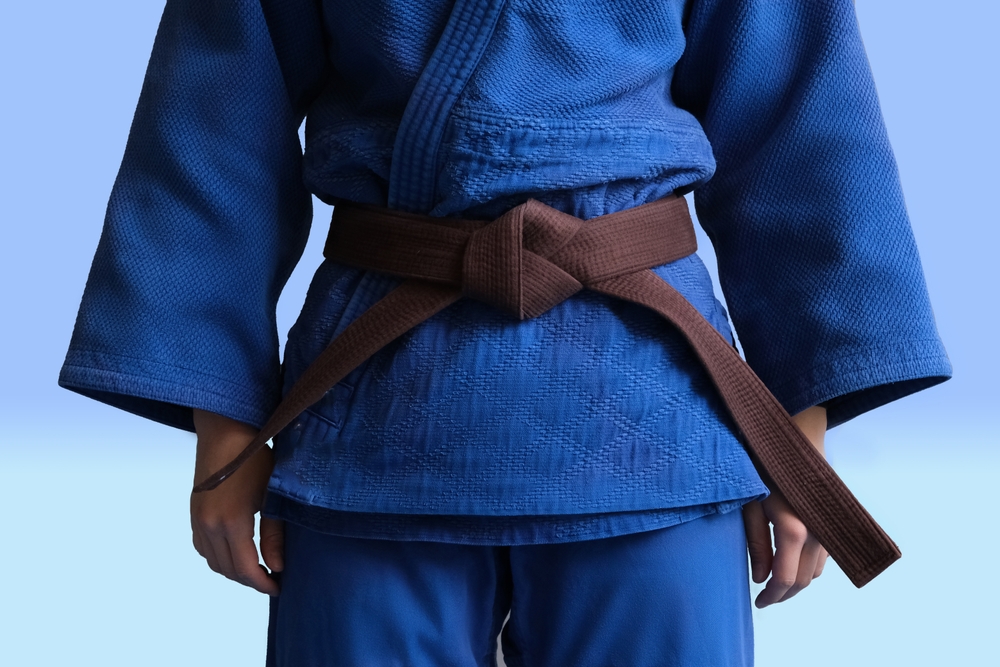
What Is a Brown Belt in BJJ?
Understanding the Rank, the Role, and the Responsibility
If you’ve spent even a little time around Brazilian Jiu-Jitsu, you’ve probably heard someone say, “Brown belt is where it all comes together.” But what does that actually mean?
Whether you’re a white belt just tying up your first gi, a parent watching your kid train, or someone who’s been rolling for years, understanding what a brown belt represents can give you serious insight into how BJJ works—not just as a sport, but as a lifestyle.
Let’s dig into it.
A Quick Look at the Belt System
In Brazilian Jiu-Jitsu, belts aren’t handed out like candy. Each one marks years of commitment, growth, and hard-earned experience. Here’s the adult progression:
White → Blue → Purple → Brown → Black
While the journey to black belt often gets the spotlight, brown belt is arguably the most transformative stage. You’ve made it through the learning curve of the lower belts, and now you’re preparing to become a black belt—not just in skill, but in mindset.
What Makes a Brown Belt Different?
By the time someone earns a brown belt, they’ve usually been training for 6–10 years. But it’s not just about time on the mats. It’s about what they do with that time.
A brown belt has:
- A well-rounded game: Solid offense, defense, submissions, escapes—nothing is missing.
- Tactical maturity: They know when to push, when to hold back, and how to think two or three moves ahead.
- The ability to teach: Brown belts can break down moves for beginners and help others improve.
- Leadership: They often help guide lower belts, lead warm-ups, or mentor new students.
- Black belt in sight: Brown belt isn’t the finish line. It’s the final test before entering a new level of mastery.
The Philosophy Behind the Belt
At Alamo Heights Combat Club—and in most serious BJJ academies—brown belt is about more than armbars and chokes. It’s about character.
Here’s how coaches and practitioners alike view the rank:
From the Coach’s Perspective:
Brown belts are like team captains. Coaches rely on them to:
- Lead by example
- Keep training rooms safe and respectful
- Mentor new students
- Help keep the culture of the gym strong
They’re not just there to “train hard”—they’re there to build the tribe.
From the Practitioner’s Perspective:
For many, brown belt feels like a turning point. You’ve moved past the “prove yourself” phase. Now, it’s about refining your skills and giving back to the community that helped you grow.
You’re not just rolling to win anymore—you’re rolling to learn, to teach, and to stay sharp.
How Long Do You Stay at Brown Belt?
Most people spend 1–2 years at brown belt, though it can vary. It depends on:
- Consistency
- Attitude
- Technical refinement
- Leadership within the academy
It’s a period of preparation—mentally and physically—for the black belt that lies ahead.
And just a heads-up: Many brown belts deal with a bit of impostor syndrome at this stage. That’s normal. The belt doesn’t mean you’re perfect—it means you’ve earned the responsibility to keep leveling up.
Brown Belt in Competition
Brown belts compete at a very high level—many have already faced seasoned black belts in training. At tournaments, you’ll see precision, pressure, and control on full display.
This is the belt where finesse starts to overtake force. It’s not just about what you do—it’s about how cleanly you do it.
What Comes Next?
The big one: black belt.
But here’s the twist—by the time someone’s ready for black belt, they’ve usually stopped chasing belts altogether. The mindset shifts from “earning” to refining. A black belt isn’t an end goal—it’s a new beginning.
Brown belt prepares you for that mental shift. You learn to:
- Teach with confidence
- Own your strengths and your flaws
- Train not just harder—but smarter
It’s like the apprenticeship before becoming a full-fledged professor of the art.
Why This Matters for Beginners and Parents
You might be thinking, “Cool, but I’m just starting out—why should I care about brown belts?”
Simple: because brown belts are the bridge between the instructors and the students. They’re the folks you’ll partner up with during class, the ones who’ll walk you through the rough patches, and the people who’ll model what long-term growth in BJJ actually looks like.
If your kid trains, you want them surrounded by people who lead with humility, patience, and grit. Brown belts check all those boxes.
Final Thoughts: Brown Belt Is Where the Art Shines
The brown belt in BJJ is a symbol of depth. It’s about technical skill, yes—but more importantly, it’s about wisdom, humility, and the willingness to help others rise as you keep climbing.
At Alamo Heights Combat Club, we’ve seen countless students grow from day-one white belts into confident brown belts—and eventually into black belts who give back tenfold. It’s not magic. It’s consistent training, real community, and a love for the art.
Ready to Start Your Own Journey?
Whether you’re chasing your first stripe or eyeing that brown belt years down the line, your journey starts with one step onto the mat.
Come train with us at Alamo Heights Combat Club in San Antonio. Our coaches and team are here to help you grow—no matter your age, experience, or goals.
Schedule your first class or call (726) 227-2988 to schedule your first class.
See you on the mats.

